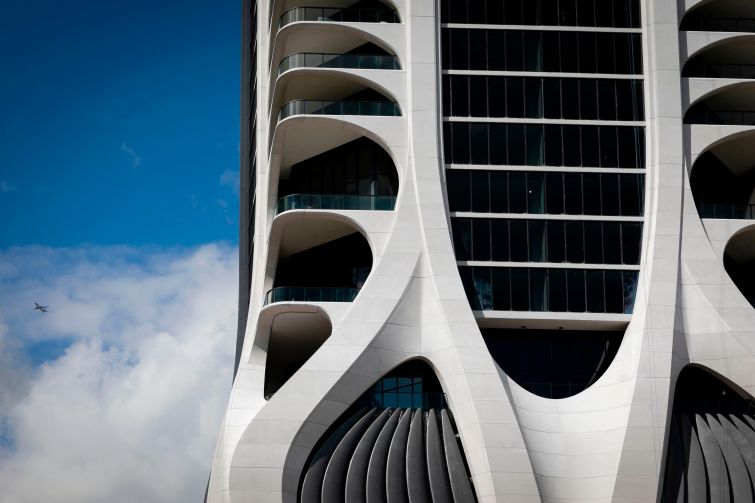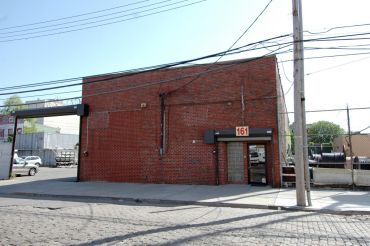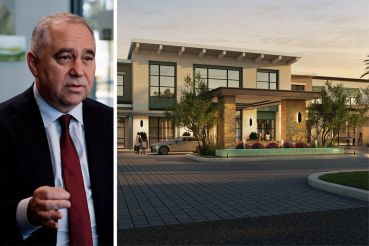Starchitects in Miami Are So Over. It’s About the Branding Now.
Tuning out Piano in favor of Porsche for better financial returns
By Julia Echikson February 8, 2024 10:00 am
reprints
As the Miami area’s luxury real estate market boomed over the past two decades, developers looked for ways to differentiate their condos — and up their prices.
Many developers turned to a commercial brand. Gil Dezer, who pioneered the tactic, inked deals with Donald Trump (before he was president), German car manufacturer Porsche, and Italian luxury fashion designer Armani.
Others turned to star architects, or “starchitects” as they’re commonly known: Herzog & de Meuron, the Swiss duo behind London’s Tate Modern art gallery; Renzo Piano, the Italian famed for the Centre Pompidou museum in Paris; and the late Iraqi-born Brit Zaha Hadid, just to name a few. All have won the most prestigious honor in architecture, the Pritzker prize, and received commissions to not only design Miami condo buildings, but also become the face of the project.
“South Florida does condos like Silicon Valley does technology. This is a laboratory for developers, builders, consumers, investors and speculators,” said Peter Zalewski, who runs the condo data and analytics firm Condo Vultures. “We got into this competition: brand versus starchitect.”
That competition now appears to be over. In the latest crop of glossy towers, developers have largely abandoned architectural flair in favor of the commercially branded condo. Tellingly, even the developers who previously worked with star architects don’t plan to do so again, at least not in the immediate future.
Instead, developers are choosing an ever wider array of luxury brands to market their condos, including everything from cars to restaurants. The current Miami condo pipeline includes towers branded by the St. Regis, Standard and NoMad hotels; Bentley and Aston Martin car companies; the fashion conglomerate Dolce & Gabbana; and restaurant operators Casa Tua and Major Food Group, to name just a few.
This turnabout is in large part because starchitect-led buildings have proven to be lackluster investments for developers, according to Zalewski. Their complicated designs entail risks and high construction costs. Buyers, for the most part, seem to prefer luxury brands that offer top-notch amenities and hospitality.
The move from starchitect to brand is visible at One Thousand Group.
Kevin Venger, a co-founder of the firm, considered it a coup when he landed Zaha Hadid as the architect of his condo development in Downtown Miami. The designer, famed for anchoring her buildings with voluptuous curves, was the first woman to win the Pritzker Architecture Prize, considered the profession’s most prestigious accolade. Competition was fierce among developers, who wanted the distinction of spearheading her first building in Florida.
“We jumped in there and locked her up,” Venger said. “She was an amazing woman.”
When completed in 2019, the resulting 62-story tower, called One Thousand Museum, turned heads. It was one of the final projects designed by Hadid before she died in 2016. It was no banal tower. Swooping cladding encircles the 700-foot-tall building, which gave rise to its nickname: the scorpion tower.
But intricate designs are often difficult to execute. Pritzker winners exploit innovative technology, which typically will balloon construction costs and pose some risks. Hadid was no exception.
“If you see a project that just looks complicated from the outside when you drive by or fly by — it was absolutely complicated to put together,” said Venger.
One Thousand Museum is held up by an exoskeleton, a construction method that places the key supports of a structure on the outside. Typically those are built by creating something resembling a box and pouring plaster, metal or stone onto it. But Hadid’s exoskeleton is curved, and traditional materials could not be used.
The developers turned to fiberglass-reinforced concrete, a relatively new, cutting-edge material, and shipped the 6,000 panels from Dubai to Miami, where each piece was assembled. The construction process was so excruciating that PBS featured it on its “Impossible Builds” series, describing the tower as “one of the most complex skyscrapers ever to make it off the drawing board.” The episode showcased the daily tribulations of construction workers.
For its next project, One Thousand Group is switching sides, returning to a regular, boxy exoskeleton for a 52-story condo development in the Edgewater neighborhood. While the development boasts accomplished architects, its selling point won’t be a Pritzker prize winner. Instead, the developer is partnering with Major Food Group, the company known for its dramatic approach to hospitality through celebrity hot spot restaurants Carbone, ZZ’s and Contessa. Major Food Group will design the Edgewater project’s interiors and open a restaurant there.
Other previously architect-friendly developers are following suit. Between 2015 and 2018, David Martin, CEO of Terra, worked with three star architects — Pritzker winners Renzo Piano, Rem Koolhaas and Bjarke Ingels — to elevate his profile and rehabilitate his company’s image after the fallout from the Great Recession.
But Terra is now nearing completion of a condo building in Coconut Grove. Instead of marketing the architects, it promotes its partnership with the upscale Italian Cipriani hospitality brand. The developer, who did not provide comment for this article, is also a partner on the Major Food Group-branded tower in Edgewater.
Edgardo Defortuna, who developed the Herzog & de Meuron-designed Jade Signature tower, has also become architect agnostic. Despite calling Herzog & de Meuron “geniuses” and describing working with them as a “great experience,” Defortuna is now building a Ritz-Carlton-branded condo complex in Pompano Beach and has launched sales for a St. Regis-branded condo property in Sunny Isles Beach, a town just north of Miami.
Representatives for the architecture firms of Piano and Herzog & de Meuron did not respond to requests for comment. A spokesperson for Ingels declined to comment.
While starchitects-led developments were by no means failures, branded properties fared better financially.
In Sunny Isles Beach, the Porsche tower outperformed Defortuna’s Jade Signature, with units averaging $1,658 and $1,500 a square foot, respectively, according to a 2017 analysis by Condo Vultures. Another Sunny Isles condo tower, Regalia, which Venger co-developed and local Miami firm Arquitectonica designed, averaged $1,616 per square foot.
The pricing disparity was reflected across Miami. The prices at the two starchitect-led projects in Coconut Grove, Ingels’s Grove Grand Bay and Koolhaas’s Park Grove, ranged between $800 and $1,400 per square foot. When done, Hadid’s One Thousand Museum traded at $1,750 per square foot. Other luxury projects that were completed around the same time, designed by local architects, outmatched the starchitects. Oceana in Bal Harbour and the Glass in Miami Beach averaged $1,850 and $2,300 per square foot, respectively, according to Condo Vultures.
“Buyers, as sophisticated as they may be, don’t want to pay extra for these architects,” Defortuna acknowledged. “The buyer is also looking for a lifestyle. That’s provided by the service and attention to detail of the people that eventually manage and run the building.”
Buyers trust brands they’ve encountered for years to provide that lifestyle, which comes in the form of amenities. A famed hospitality group, for example, will provide restaurant-quality meals, while a storied hotel name, such as St. Regis and Ritz-Carlton, will supply a skillfully managed spa, beach club and marina. Once the building is completed, the expenses are typically added to residents’ monthly charges.
Still, while there’s been a slowdown in starchitect-led condos, they haven’t entirely fled Miami. Hadid’s firm is designing the condo that will be built on the site of the fatal building collapse in Surfside. And OMA, Koolhaas’s firm, is designing an oceanfront complex in Miami Beach.
But both have yet to break ground, or nab sizable construction financing, and are much smaller in scale — 12 and 17 stories tall. Given the lessons learned, developers are unlikely to brand a tall condo project after a starchitect, analyst Zalewski said. These require a wide audience. Architectural rock stars have instead proven to be a niche.
“We’re really a consumer society where brand means everything,” Zalewski concluded.
Julia Echikson can be reached at jechiksom@commercialobserver.com.


